Dear friends,
Leaving the South Shetland Islands we steamed southwards towards the Antarctic Peninsula, and it was lovely to still be able to be up on deck late into the evening as the sun didn’t set until well after 10 pm.
Lovely evening colours and view from the top deck as we approach the Antarctic Peninsula.
Orca whales ahead of the ship – this is when I wished I had a long zoom lens!
A bit closer so you can see those white patches identifying them as Orca.
A pod of several paced us, just ahead, often only visible by their spume.
But how very beautiful to stand on deck and watch them plying their way across the vast Southern Ocean
with the majestic mountains of the Antarctic Peninsula beyond.
We were now at 64 degrees south and had already travelled 777 nautical miles (approx 1,450 km) since leaving Ushuaia, and the temperature was getting a little cooler although still ranging between 2-5 degrees centigrade.
We were due to make our first landing on the Peninsula in the morning at Portal Point and explore Charlotte Bay but our group first cruised the bay by zodiac before setting our feet on the land.
Picture postcard view of what I imagined the Antarctic to look like with our Antarctic flag waving briskly at the bow.
And a big difference from the South Shetland Islands – we were now amongst icebergs of all shapes and sizes.
One of the expedition team off to find the best landing spot for the zodiacs.
The crew swings into action to lower the zodiacs, the kayaks & the paddleboards
so everyone can get off the ship & enjoy the morning.
A whale is spotted – which bodes well for the group cruising the bay before the landing. How close can we get?
It’s all action as the team prepares the boats and equipment for the morning.
First to leave are the kayakers …
… then the paddle-boarders ….
… and then the rest of us – half for the cruise, half for the landing, 10 to a zodiac and quickly aboard using both loading steps.
The Ocean Endeavour looking splendid again the peninsula and bright blue sky. Our cabin was just under that front lifeboat.
And how exciting to be witness to these humpback whales feeding and diving.
Two of them – one showing the humped back which gives them their name, the other diving.
Syncronised diving at its best, the white underside of the tail flukes visible.
And then there were the icebergs, and imagine, only about an eighth of their size is above water.
Beautiful gradations of colour and many sculpted and penetrated by winds and lapping waves.
Even the smallest little shards still bobbing on the waves and delicately balanced.
Then, across the still waters to set foot on the Antarctic – the 7th continent.
Landing on the rocks, aided by the team. Swing your legs over, facing the stern, and step ashore.
An opportunity to have my photo taken with the flag, my shadow making me appear as Superwoman!
Climbing up to enjoy the view and it was warm enough to remove your jacket as you trudged up through the snow.
A crab-eater seal basks in the sun, also enjoy the heat and not bothered by the humans tramping past. Despite their name, these seals don’t eat crabs, they eat krill, small shrimp-like crustacea. Their name originates from the German word, ‘Krebs’,which covers other crustacea as well as crabs. Crabeater seals have specially adapted teeth with extra projections to gulp in seawater and strain out the krill. They are capable of diving to depths of 250 m, but usually feed within the upper 20 m of the water.
A lone paddle-boarder makes his way across the bay behind our landing site.
A small lagoon close by offers a beautiful mirrored reflection.
Another map to show you our journey. In the afternoon, we enjoyed a spell on deck as we moved on to Enterprise Island, and had another hour on the zodiacs at Wilhelmina Bay where we saw the rusted wreck of an old Russian whaling vessel. Later in the evening, we travelled through the Neumayer Channel which separates Anvers Island from Wiencke and Dourner Islands, is some 26 km long and only 2.4 km wide.
The hunt for whales and seals was the reason for the initial exploration of Antarctica. Reports of abundant stocks drew the adventurous from the early 1800s onwards. Before long there were major crashes in the populations of some wildlife. The Antarctic fur seal, for example, was almost totally wiped out at many locations by 1830 leading to a decline in the sealing industry although it continued on a smaller scale well into the 1900s.
The wreck of a whaling ship lies half-submerged in the shallow waters of the bay.
Her metal hull still pretty much solid, if rusted, and the hinged door remains attached.
On the opposite of the bay are two old wooden boats, one remarkably still intact, other relics of the whaling days.
Impressive view from below the bow. What stories she could tell from those bloodthirsty, blubbery days.
The story of Antarctic whaling is one of greed and excess. Once the most profitable species had been hunted to a point of great scarcity, the next species was hunted until it too was very rare, then the next and so on, Blue, Fin, Sei, then Minke whales in that order. The Antarctic whale fishery has been described as being more like mining than fishing.
In the 1960s blue and humpback whales were fully protected, protection that was then extended to fin and sei whales in the 1970s. In 1986 the IWC suspended all commercial whaling. Whales are protected by the International Convention for the Regulation of Whaling, the founding document of the IWC, first signed in 1946. There are still some nations who whaling – claiming for it to be doing research…
From the largest creatures to some of the smallest – ‘what are these small floating red polyps’, we asked our guide?
This is a salp, scooped out of the sea.
A salp is a barrel-shaped, plankton which moves by contracting, thus pumping water through its gelatinous body, one of the most efficient examples of jet-propulsion in the animal kingdom. The salp strains the pumped water through its internal feeding filters, feeding on phytoplankton. They are of zero nutritional value and too many are big trouble for the Antarctic. Like collapsing ice-shelves, the surge of salps indicates that other life forms in Antarctica and its surrounding waters are in decline.
When salps are abundant, Antarctic krill are scarce. No krill, no antarctic fauna or Antarctica as we know it.
Back to the ship, with lenticular clouds floating above the snowy antarctic landscape.
More stunning icebergs as we make our way towards and down the Neumayer Channel
Such a beautiful blue, looking down at the lower part of the iceberg through crystal clear waters.
A more slender, flat-topped iceberg, most likely broken off from an ice-shelf rather than calved from a glacier.
The land closing in along the channel, with clouds blocking the sun, but patches of snow illuminated nonetheless.
We pass another ship, one of the few we saw, making its way north up the channel.
Clouds descending further, but the low sun casting an eerie light on the glaciers stretching right down to the sea.
A ‘god is talking’ moment as the sun pierces the cloud and shines on the waters of the Neumayer Channel.
Another incredible day in the Antarctic and tomorrow we visit Port Lockroy, which houses an old British Antarctic Survey hut and a post office! We see many more penguins and are awed by our travel through the Lemaire Channel and the Iceberg Garden. I hope you will continue this journey with me, day by day.
Until then, enjoy this day travelling with me down the Antarctic Peninsula.
All good wishes,
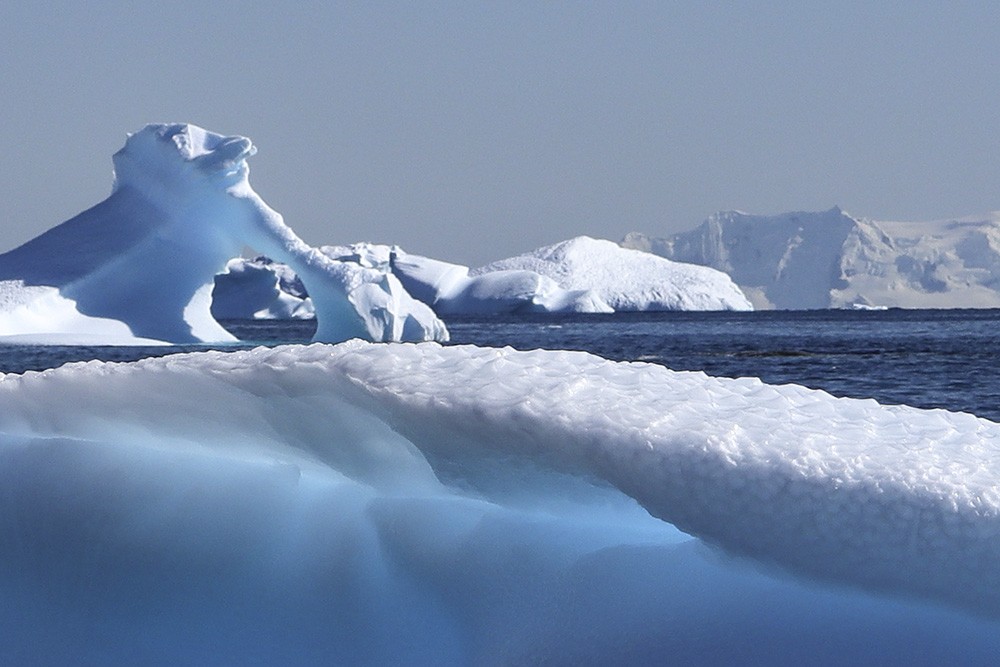
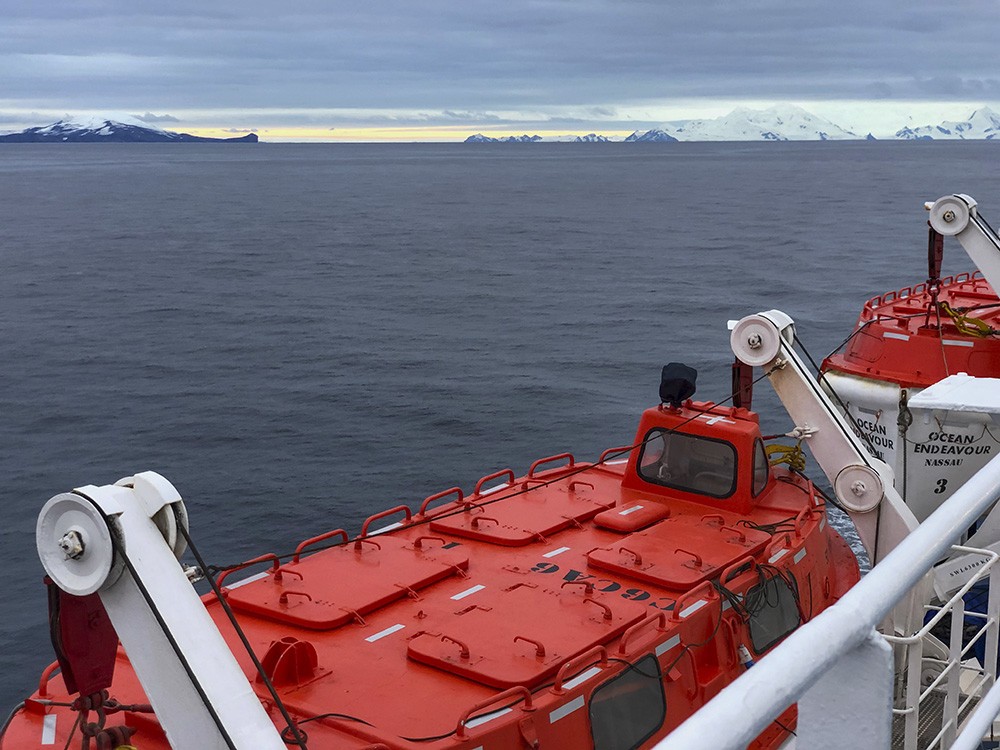
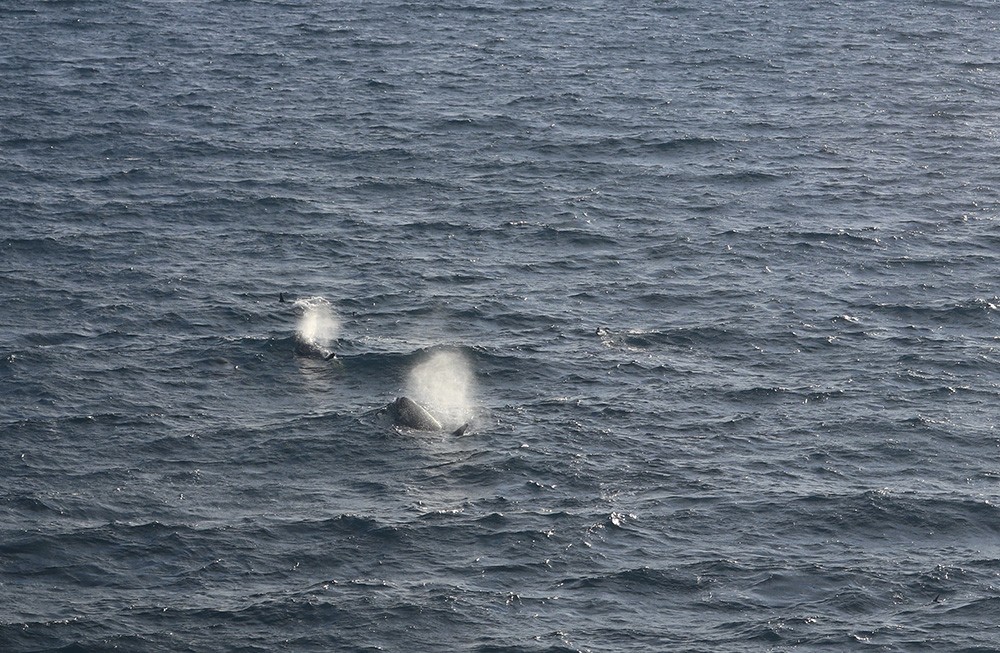
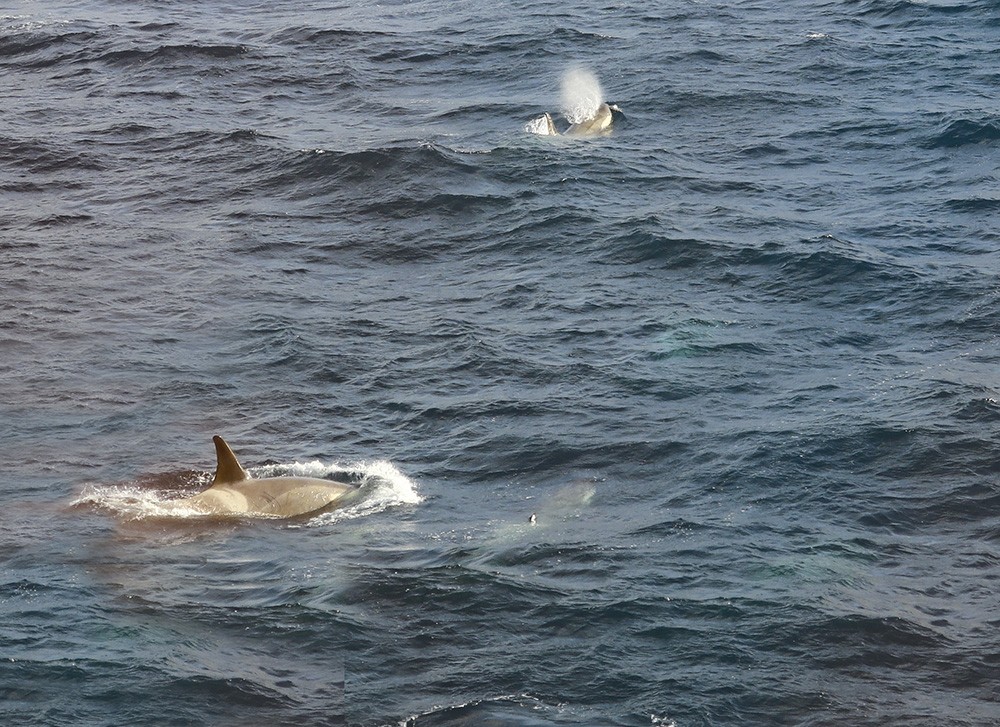
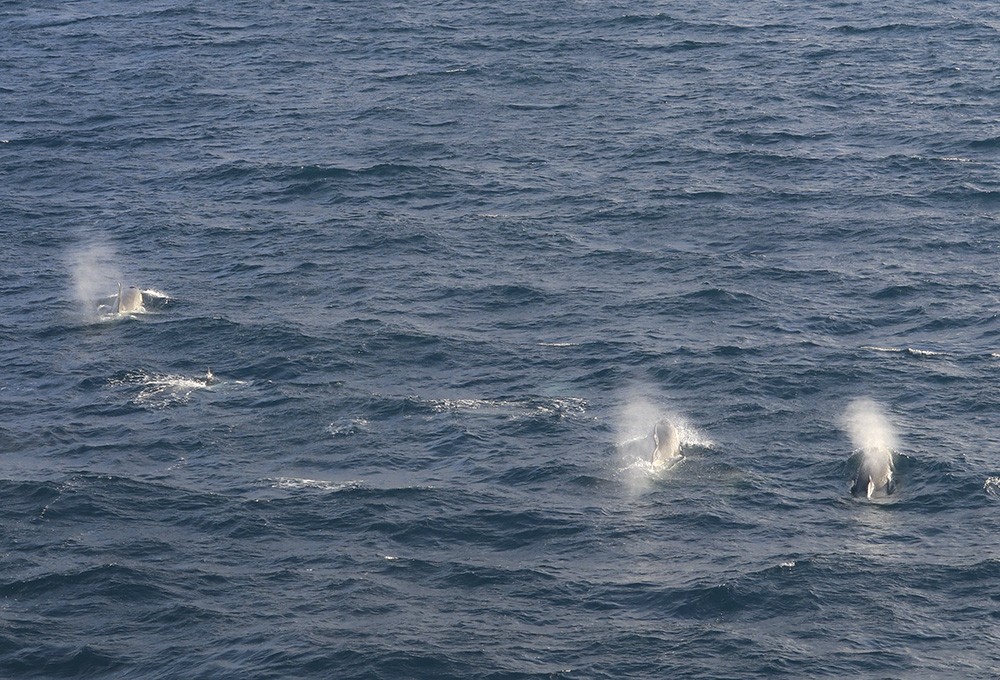
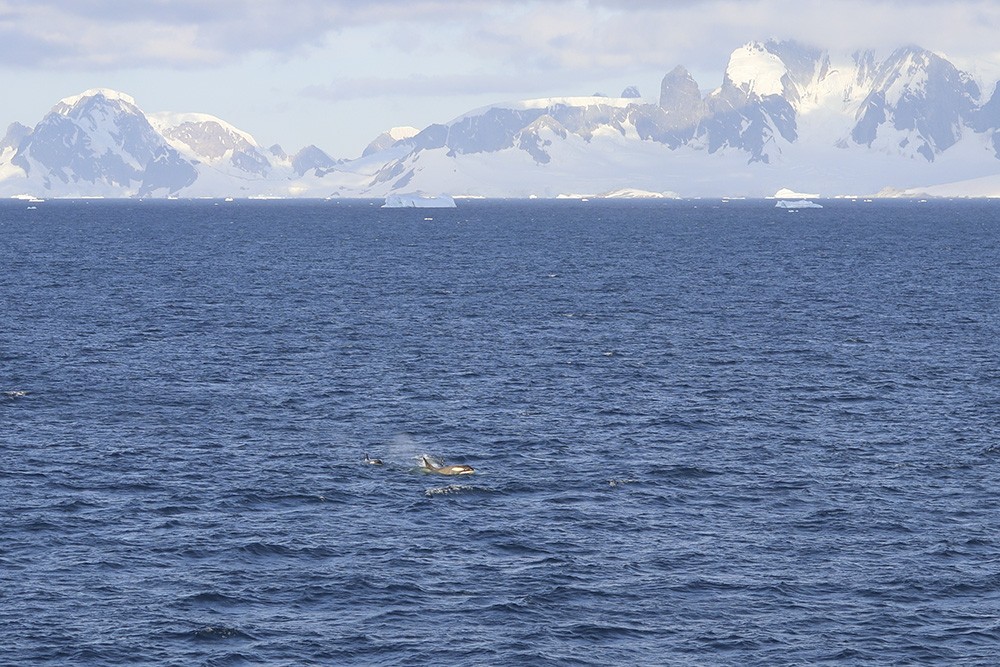
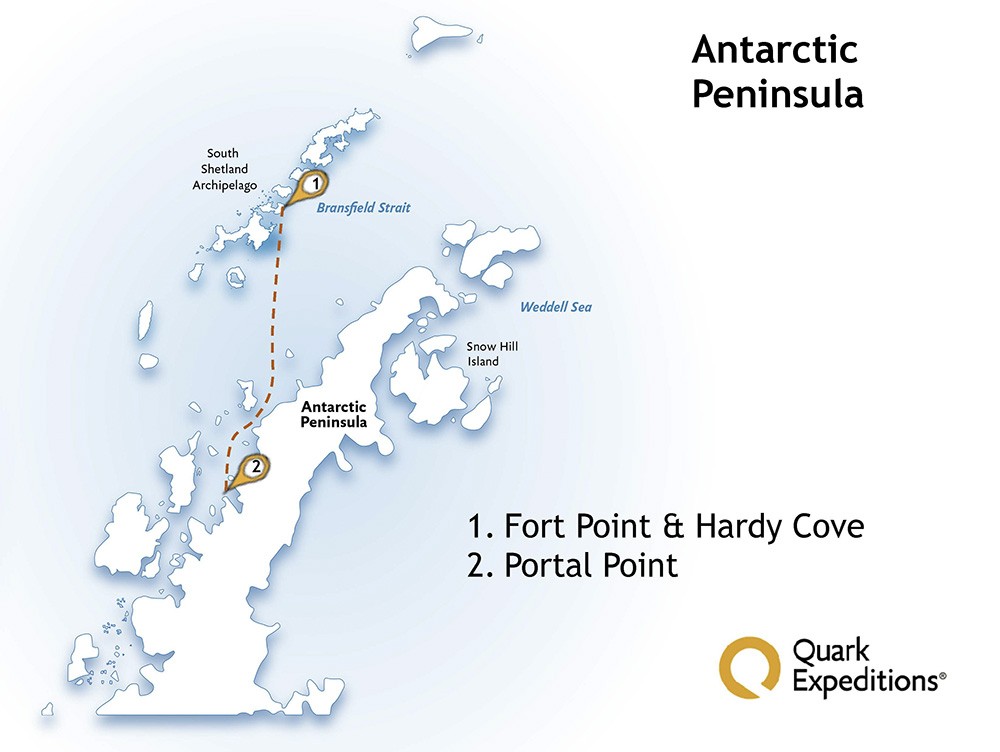
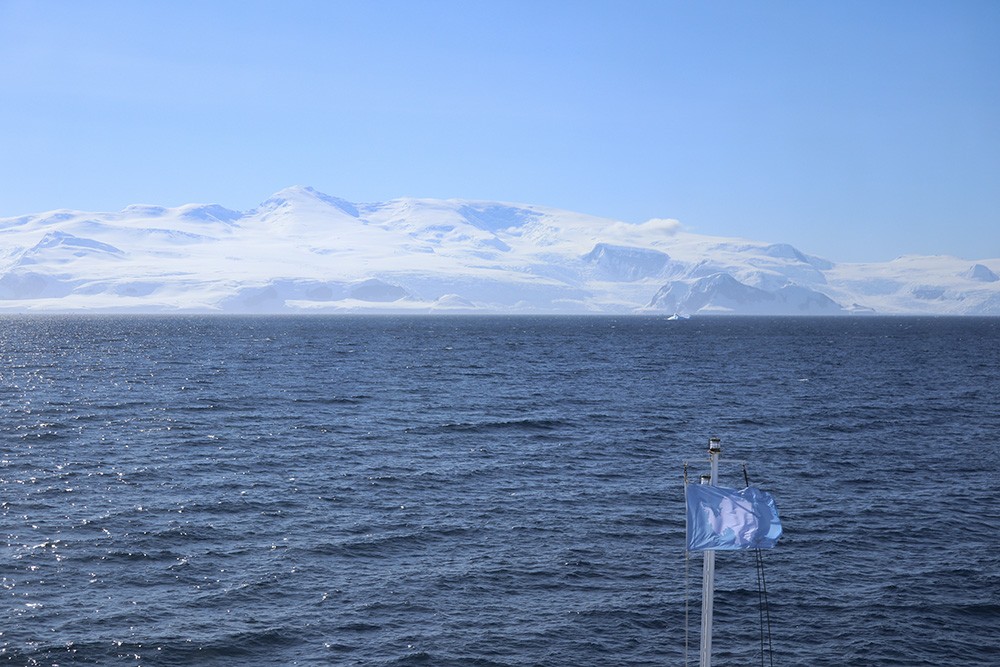
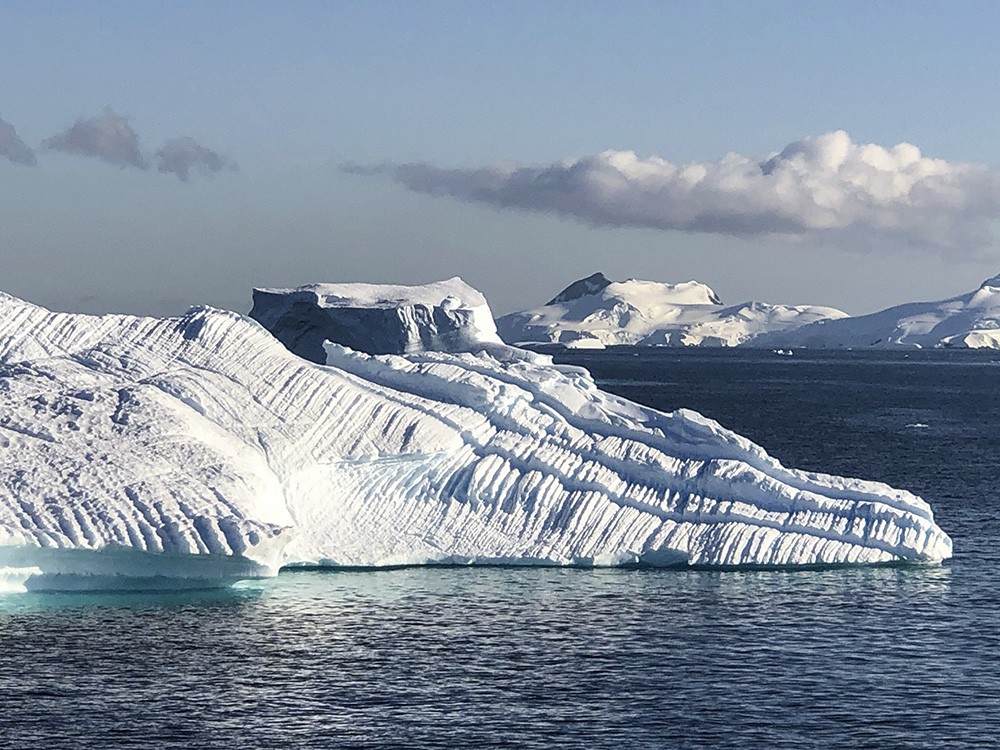
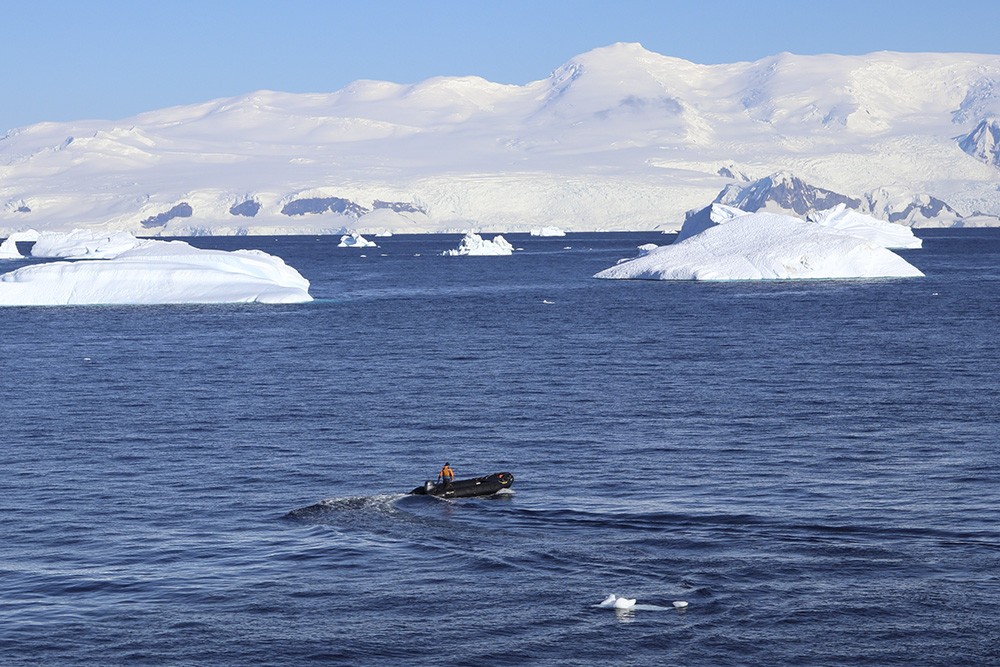
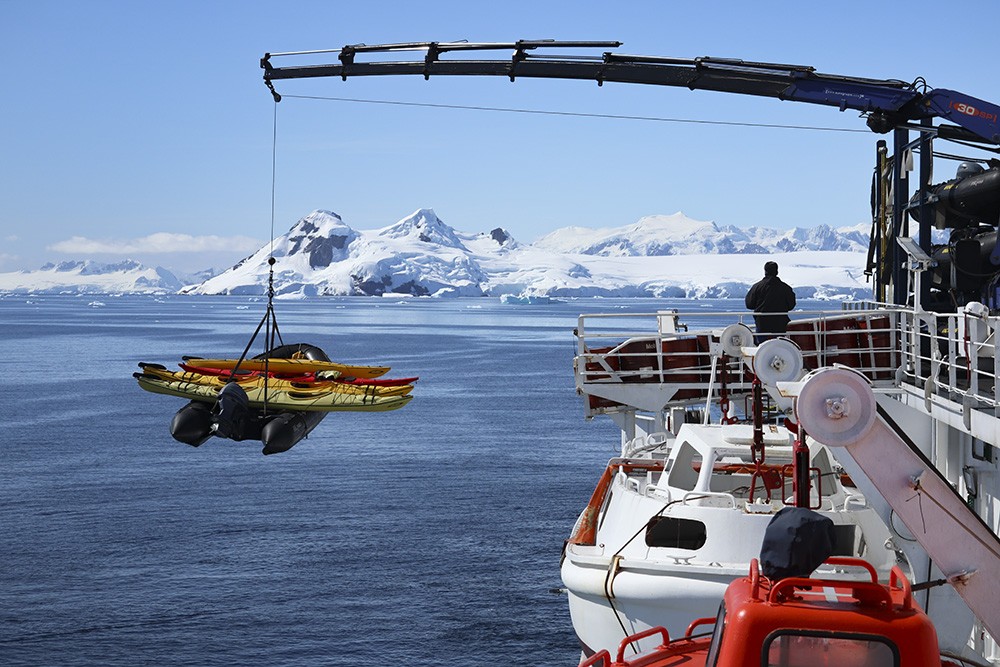
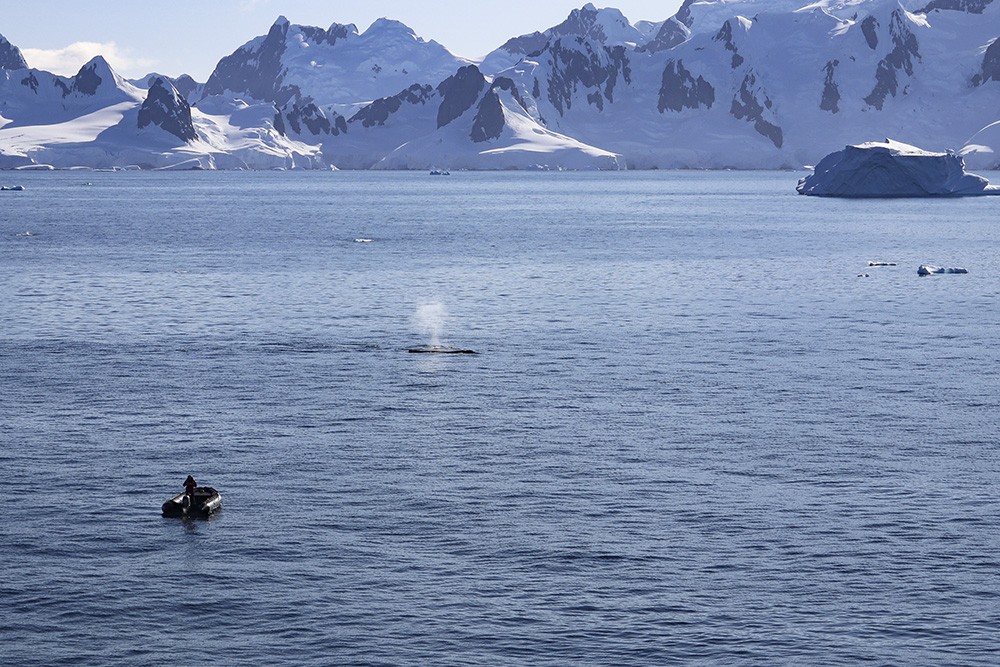

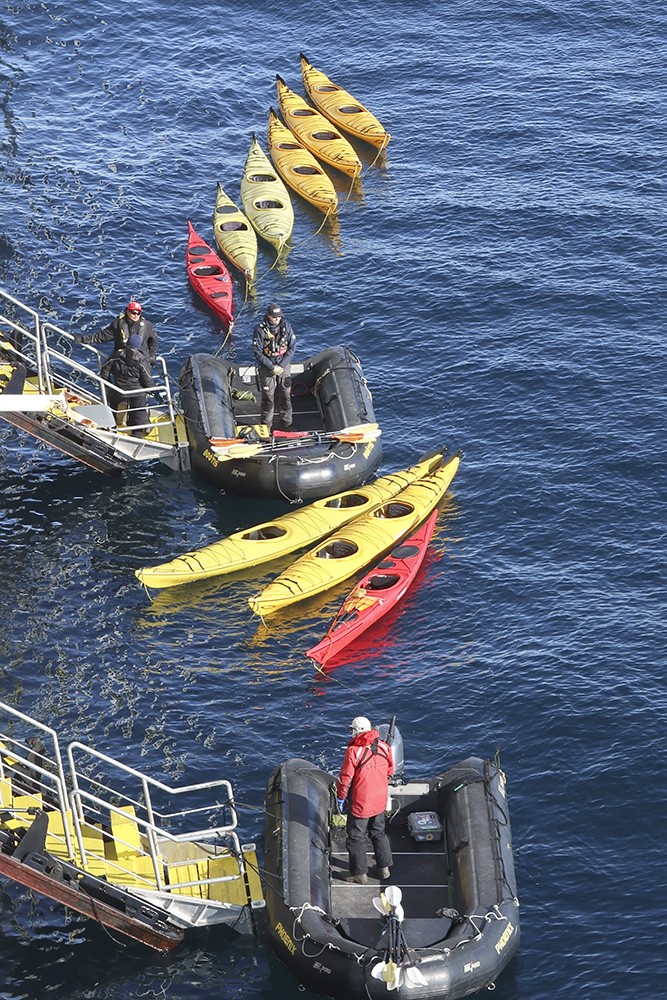

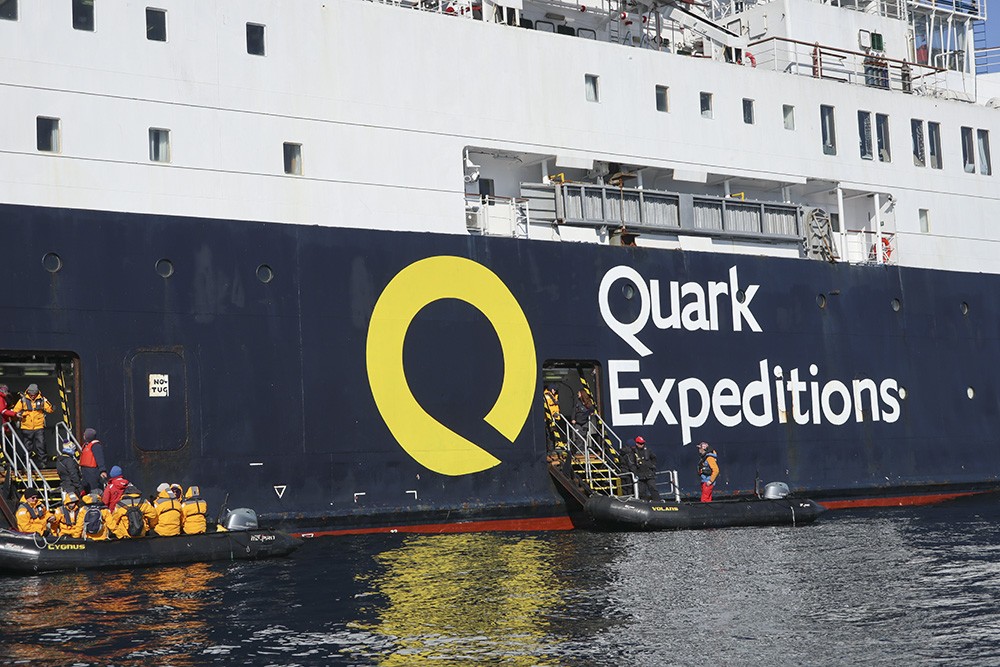
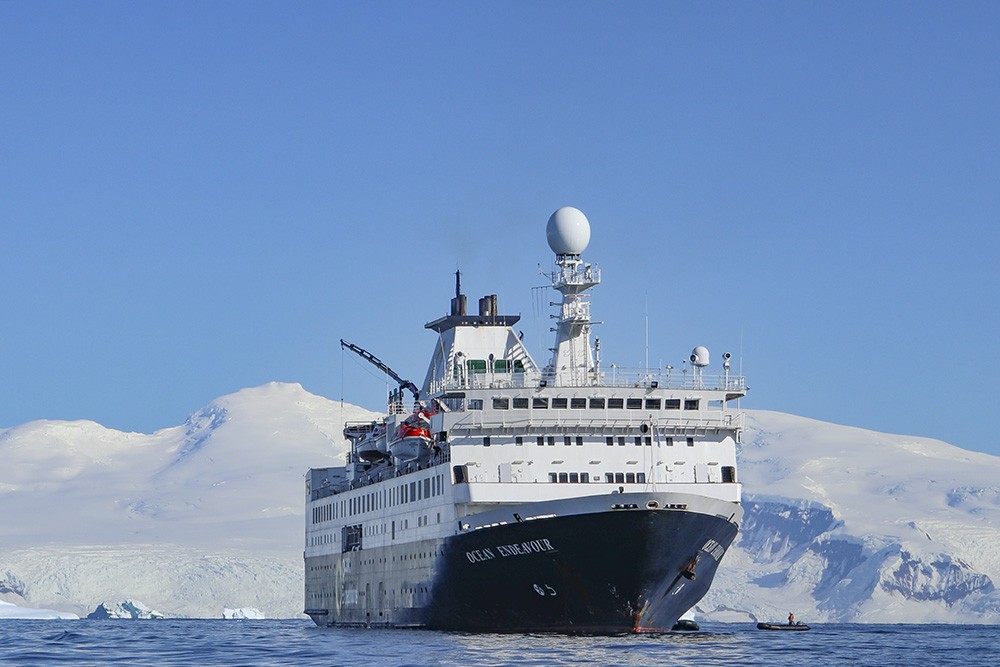
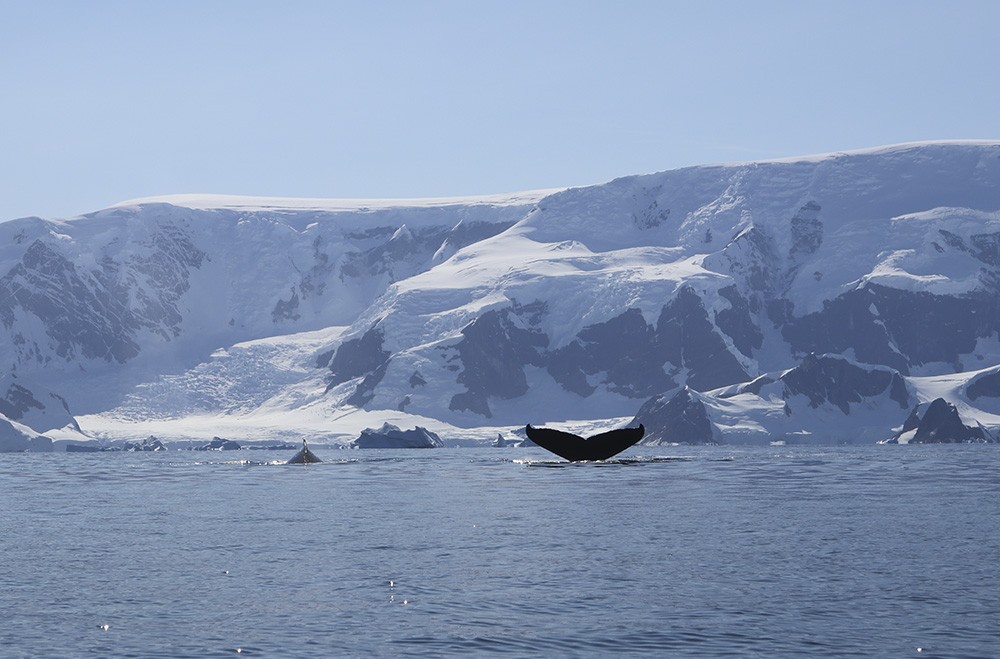
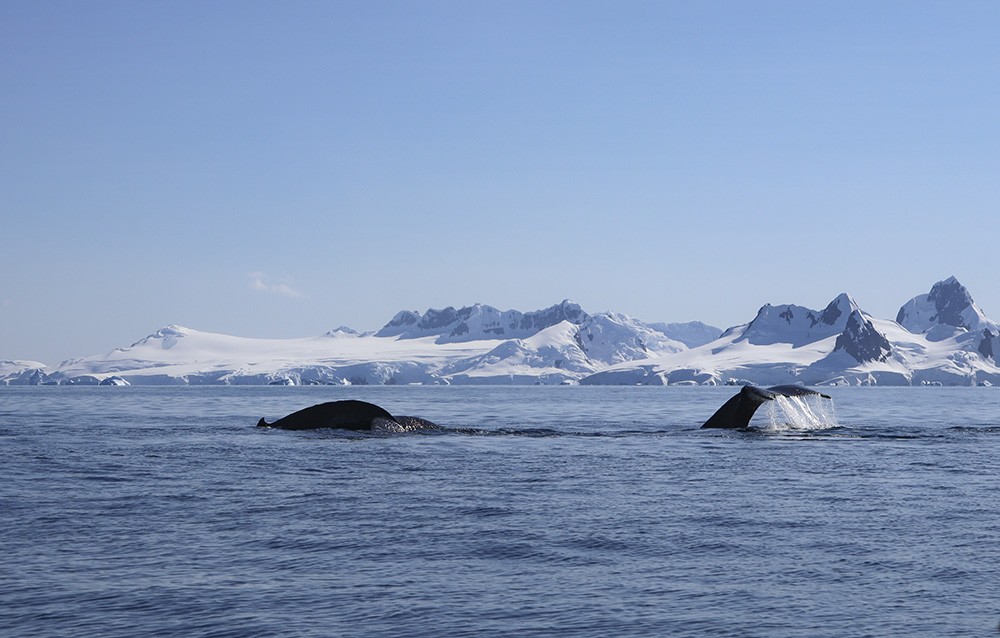
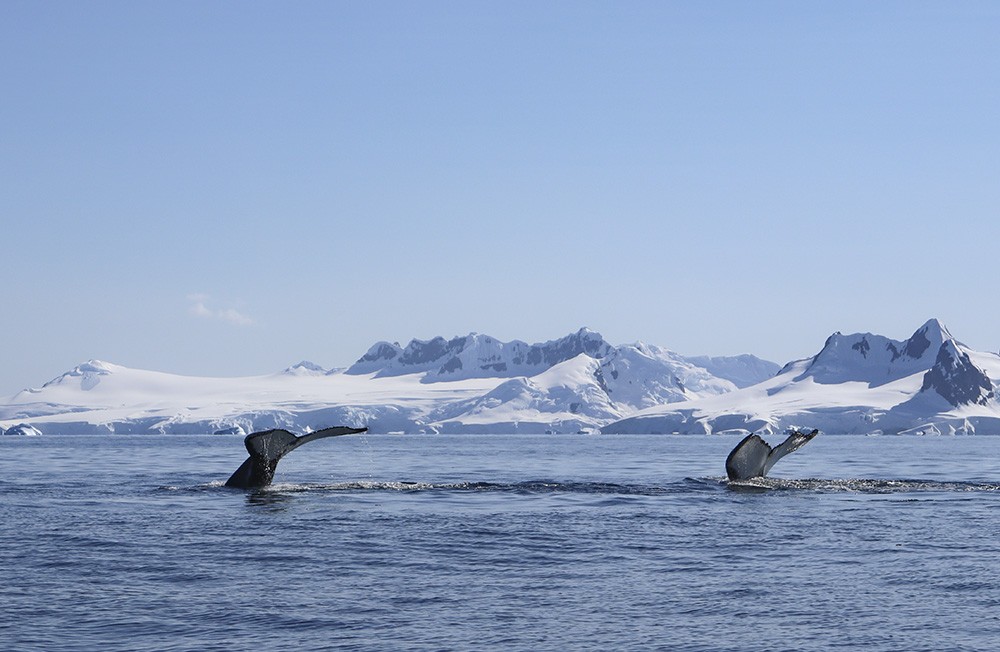
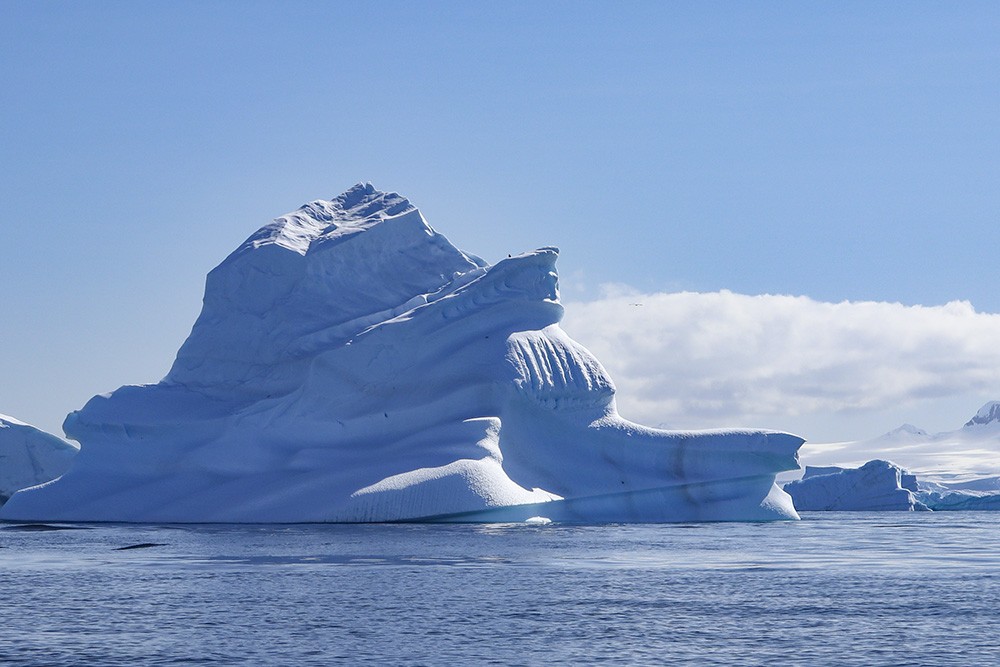
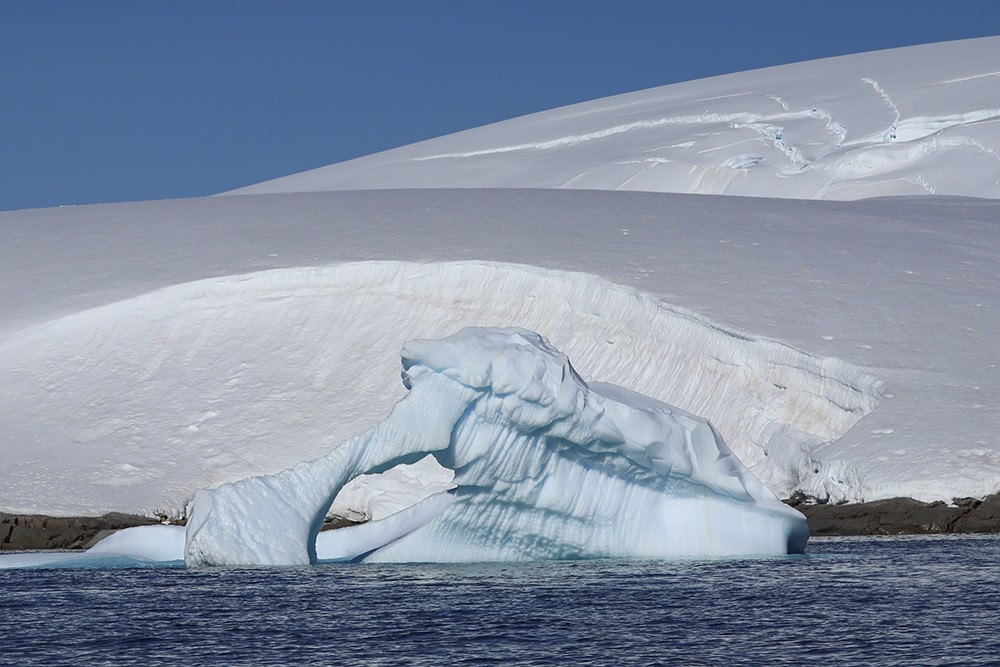
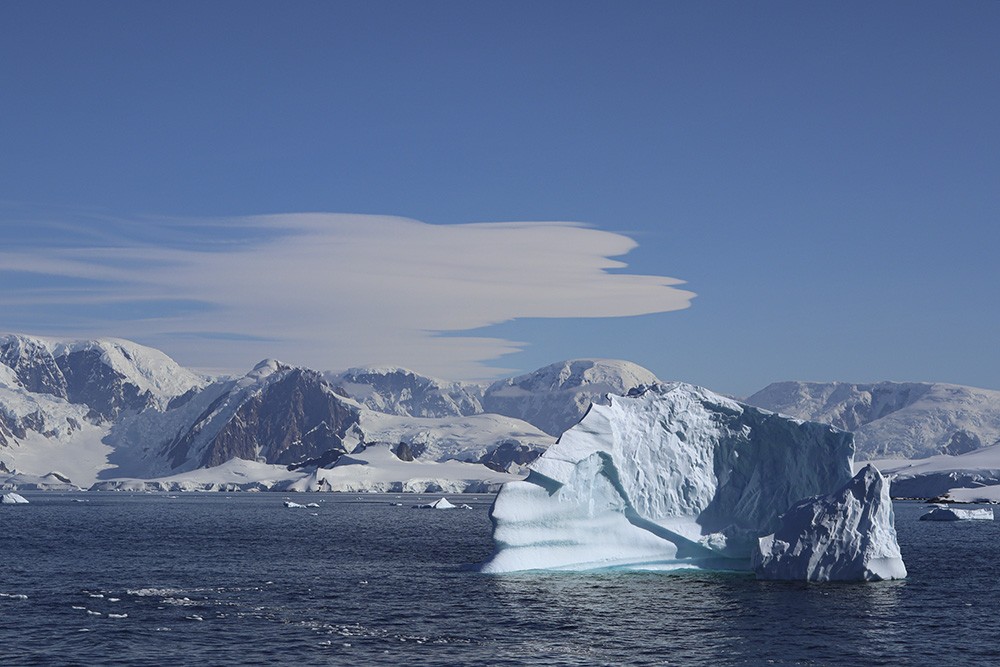
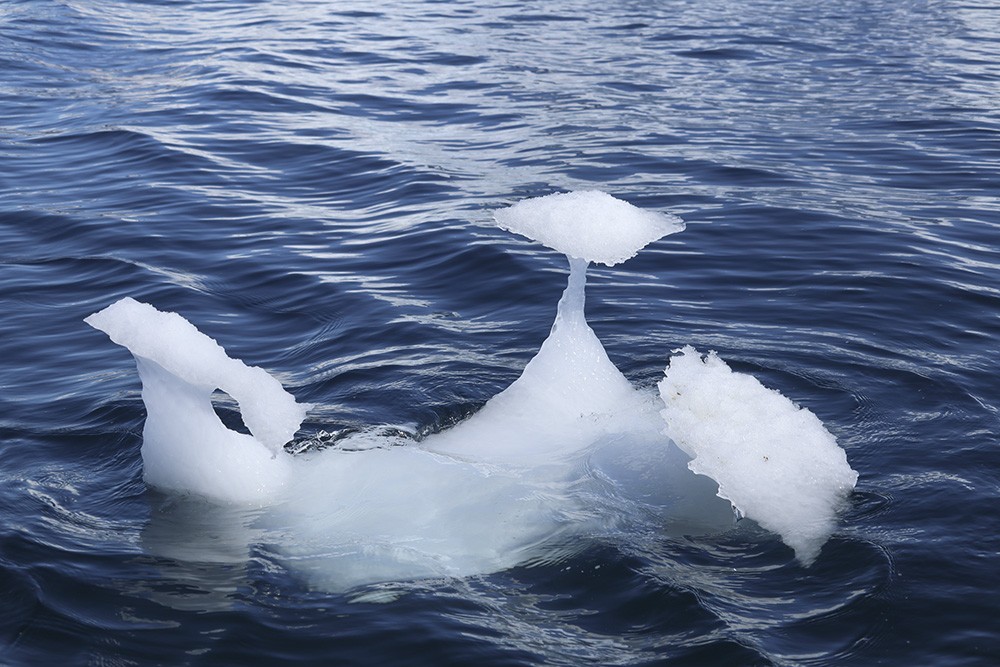
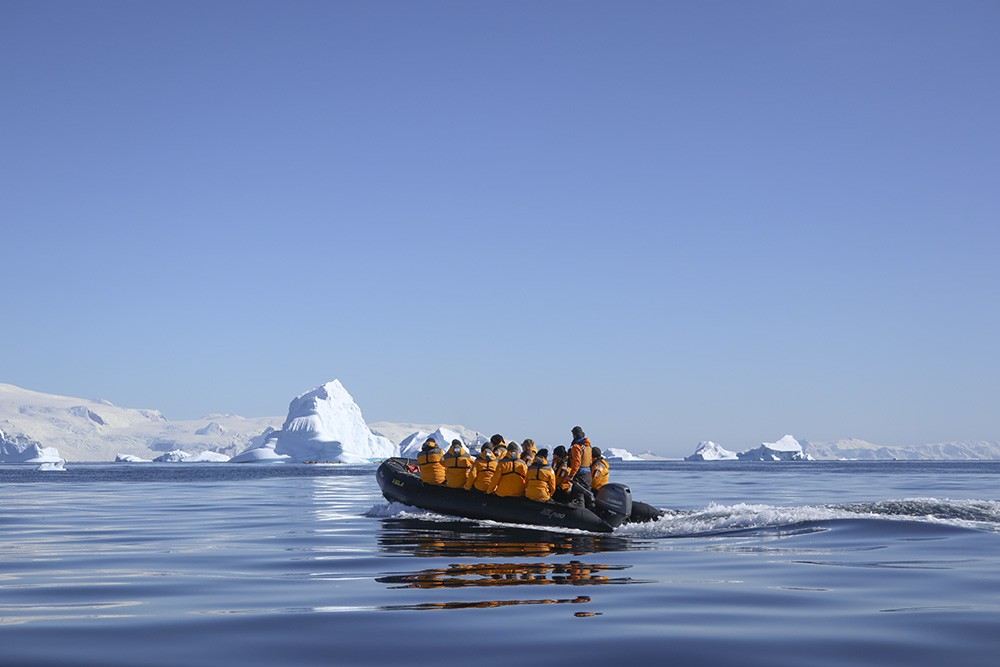
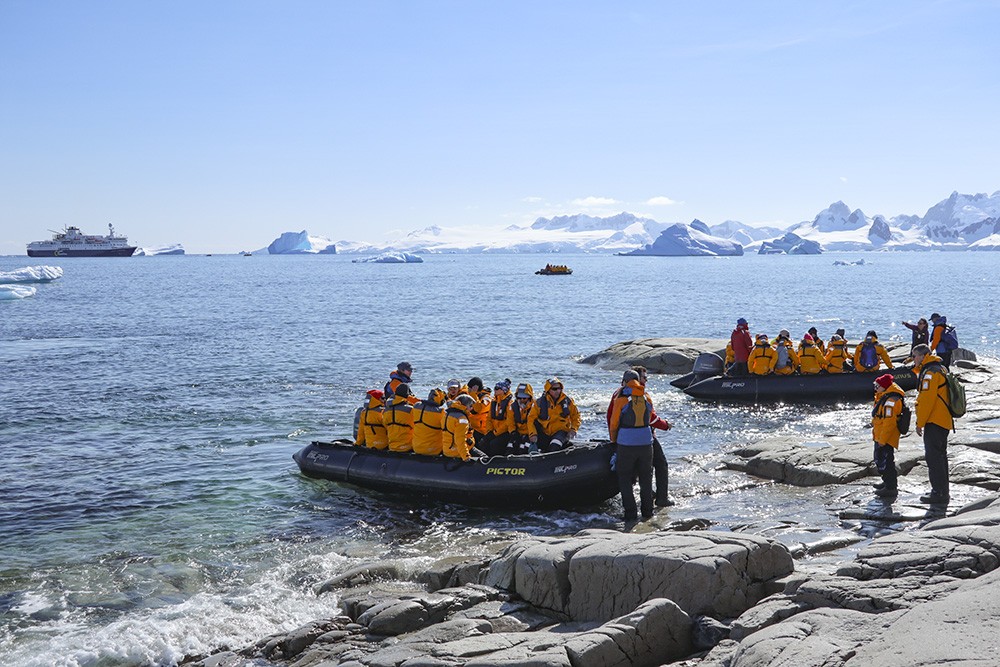
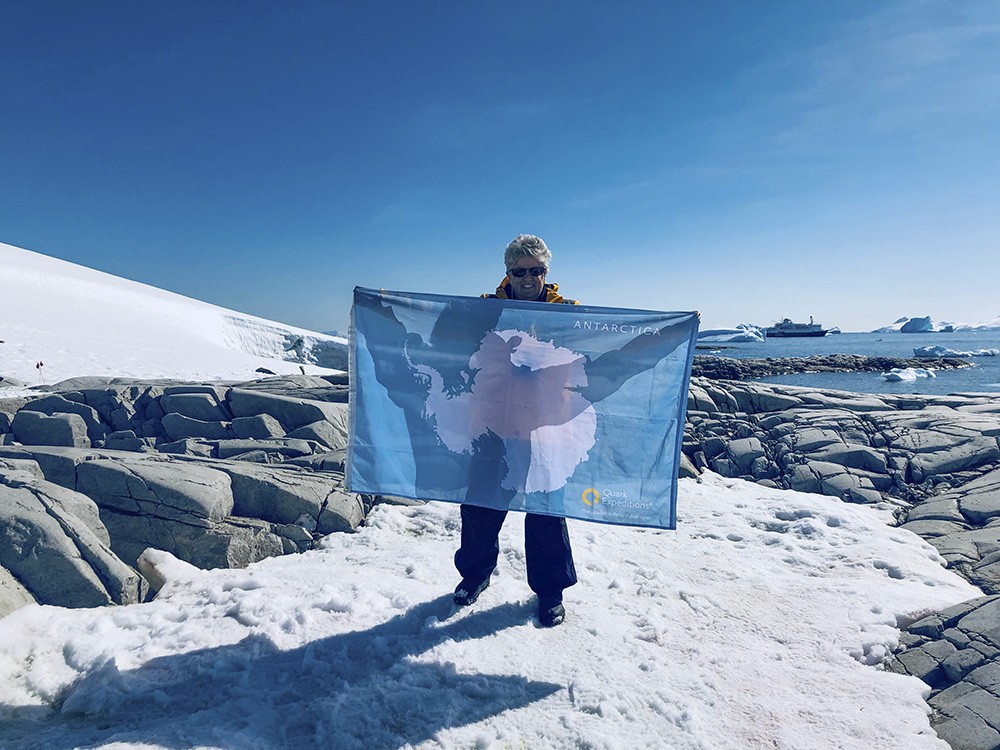
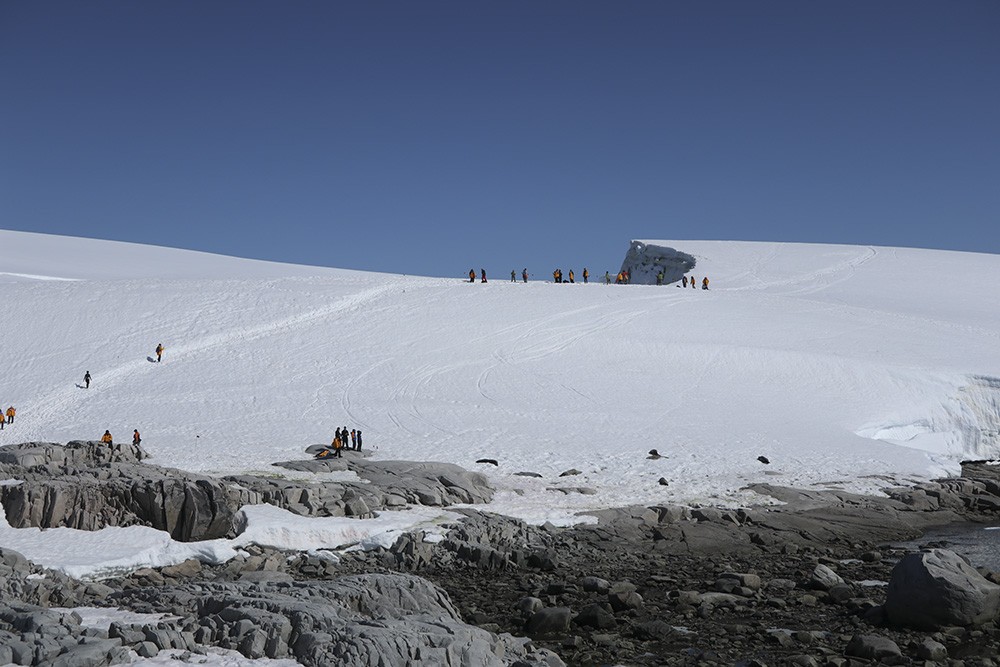
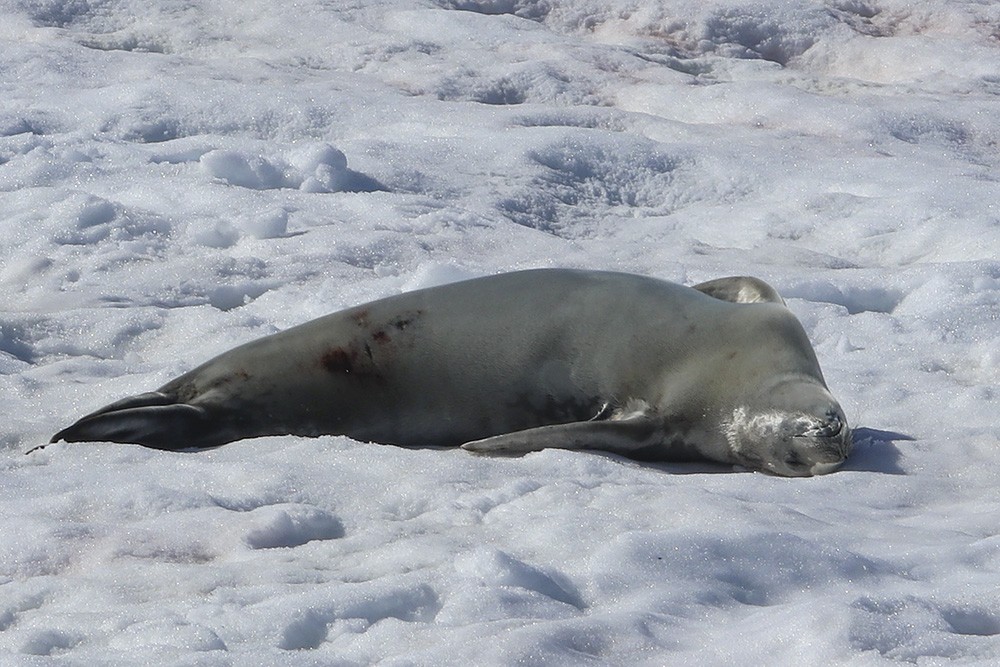
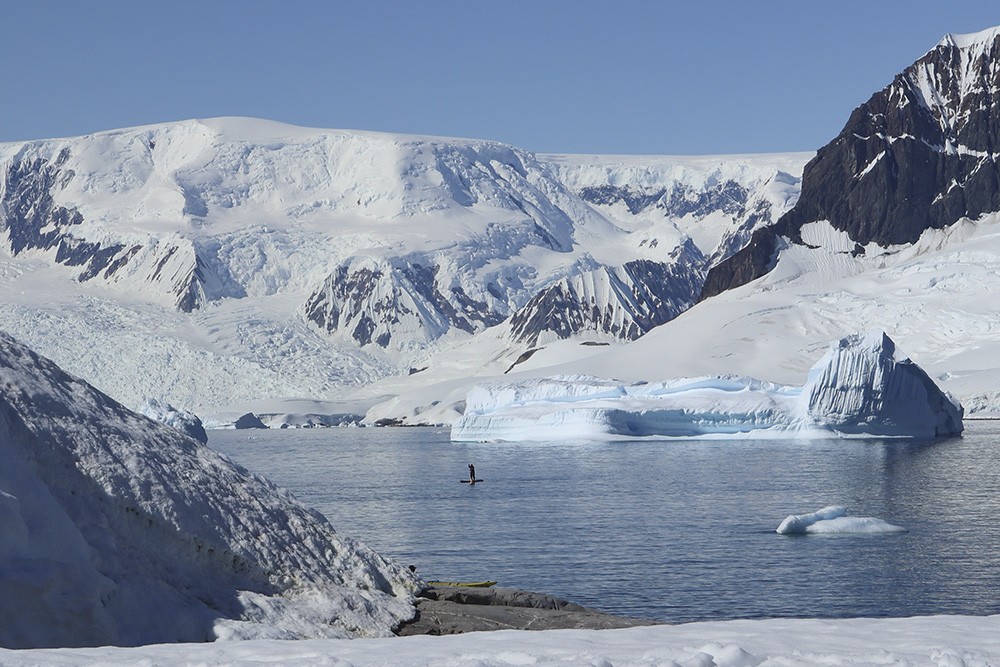
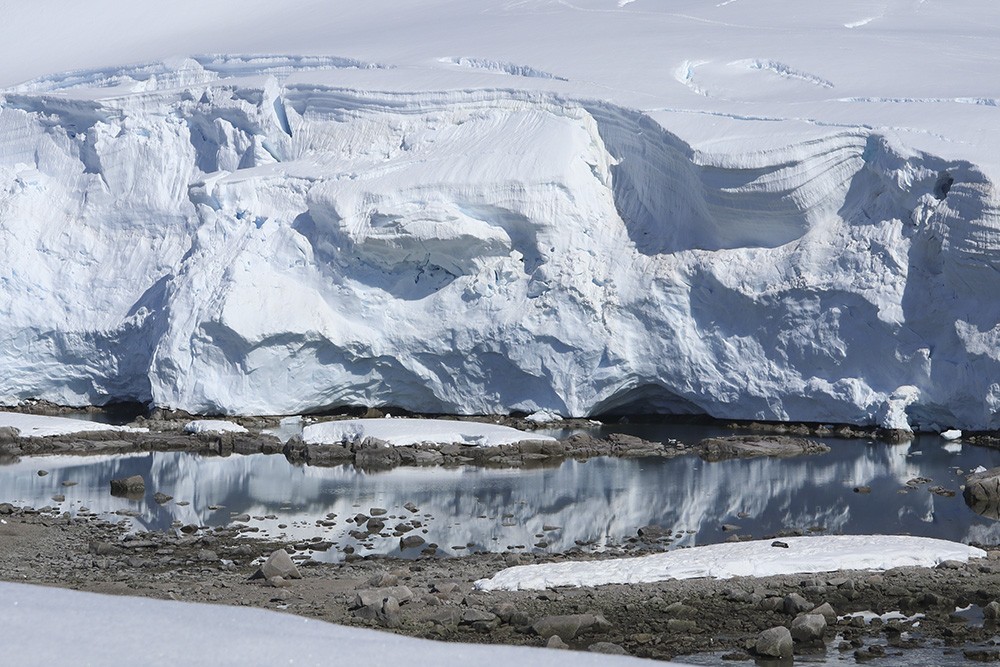
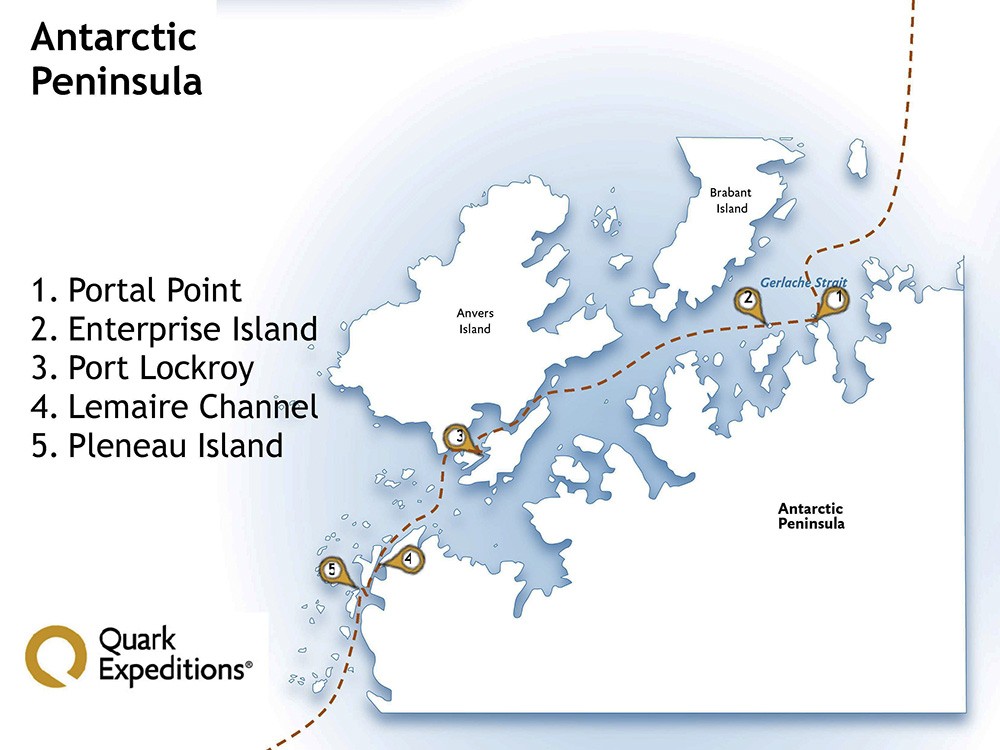
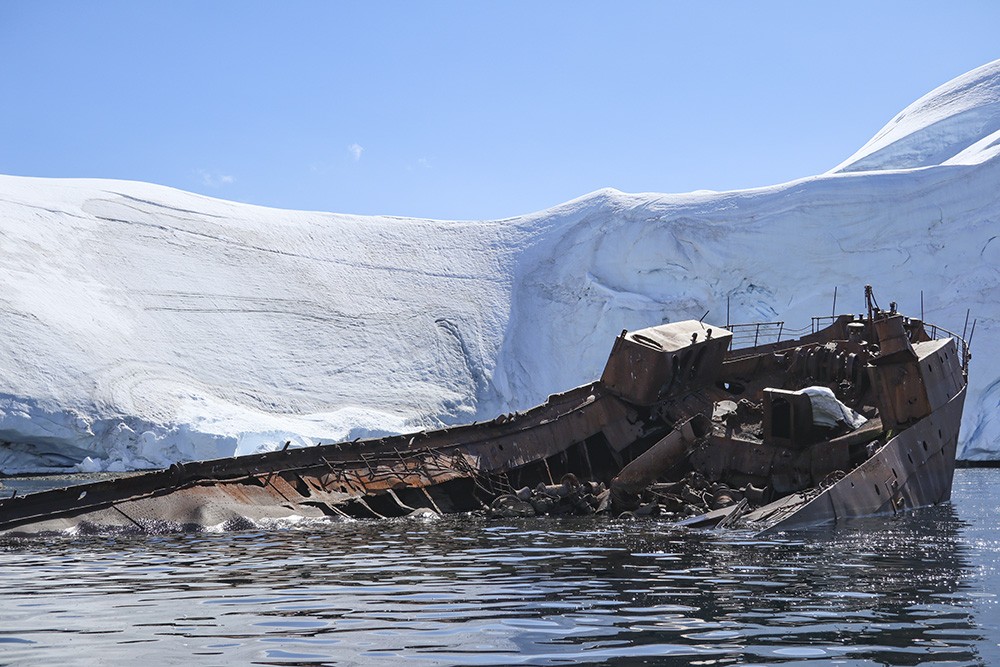
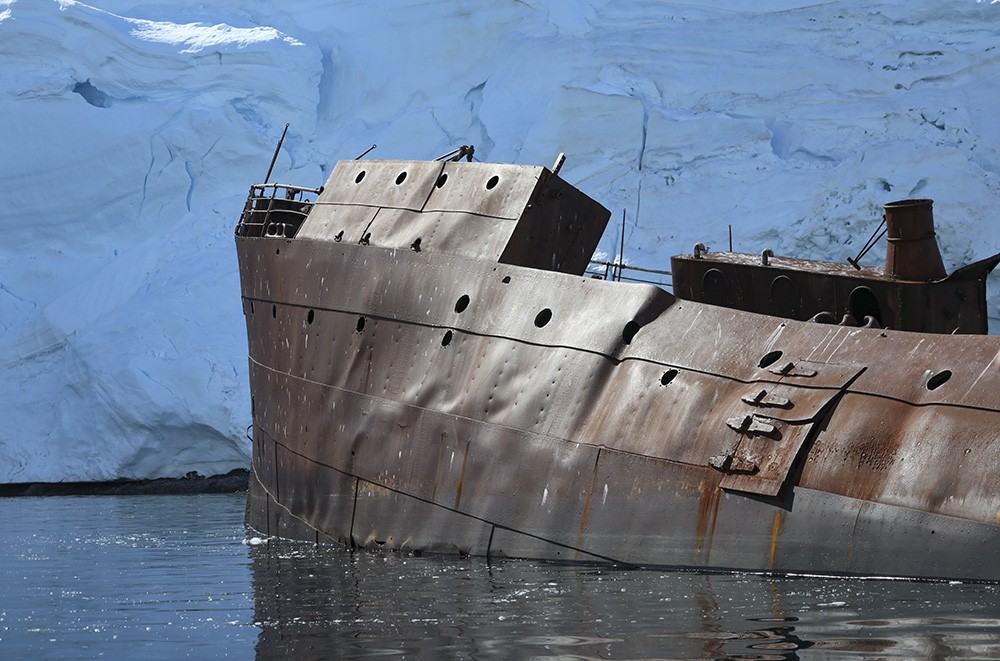
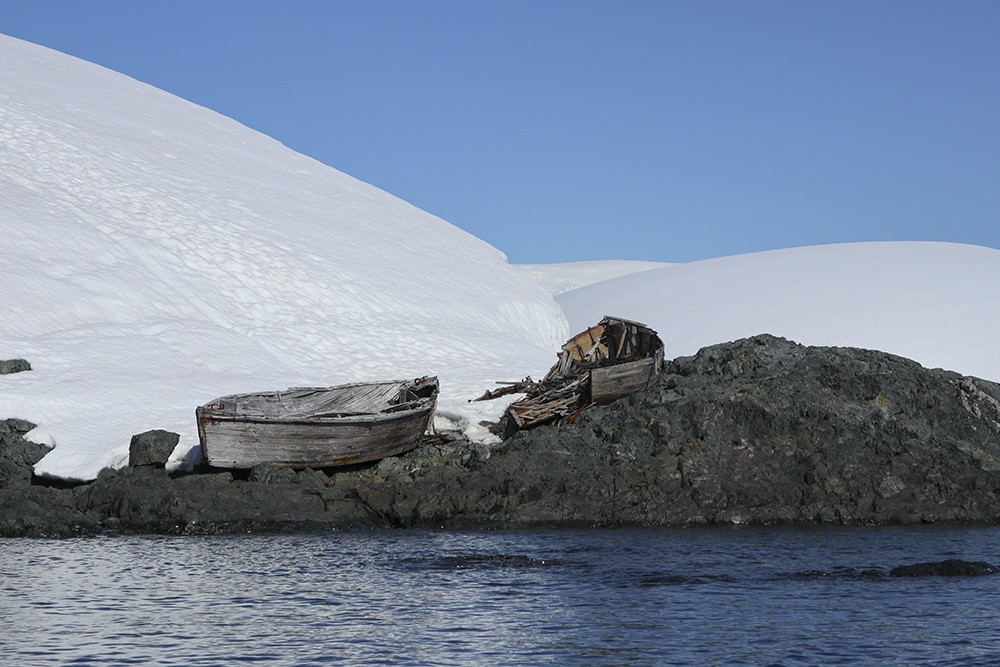
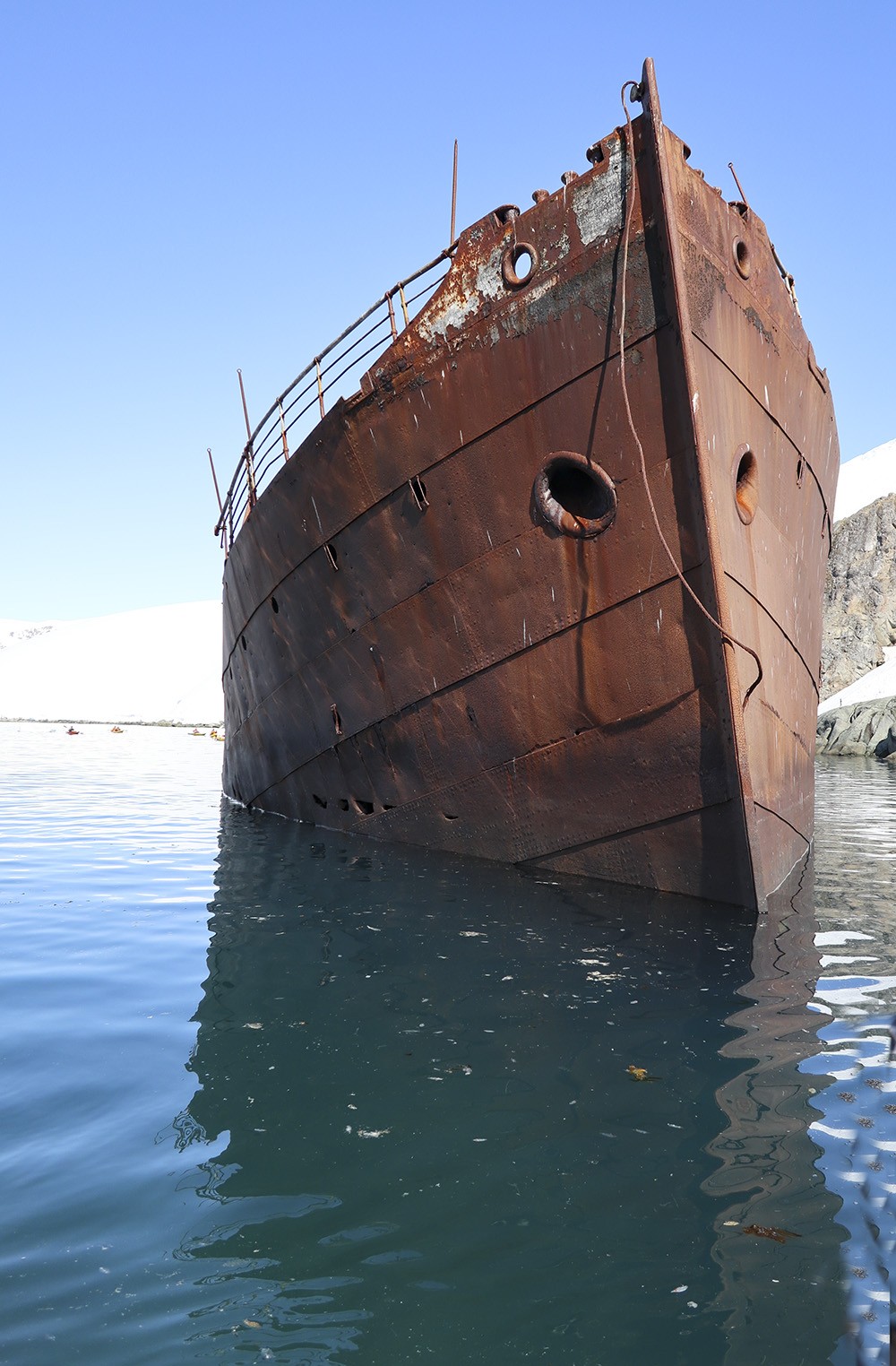
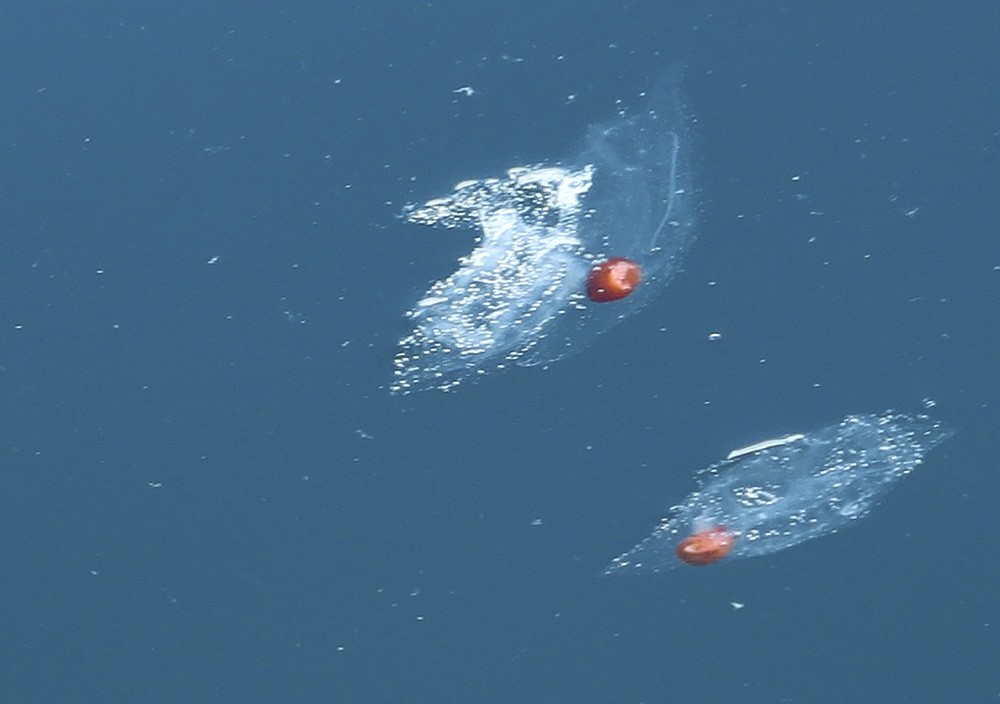
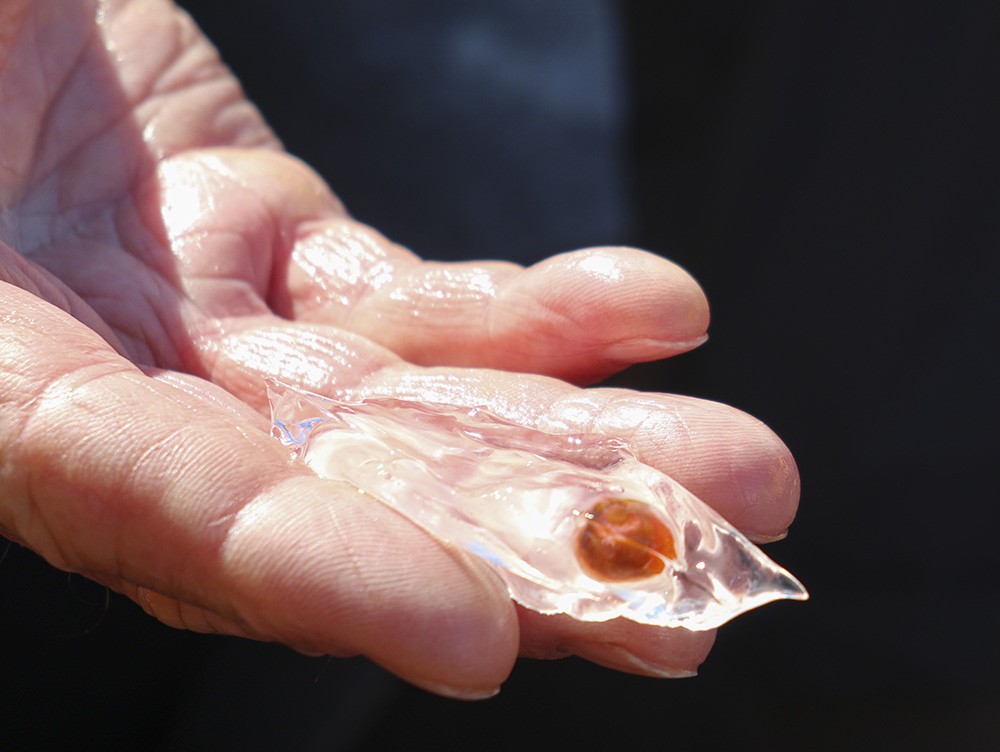
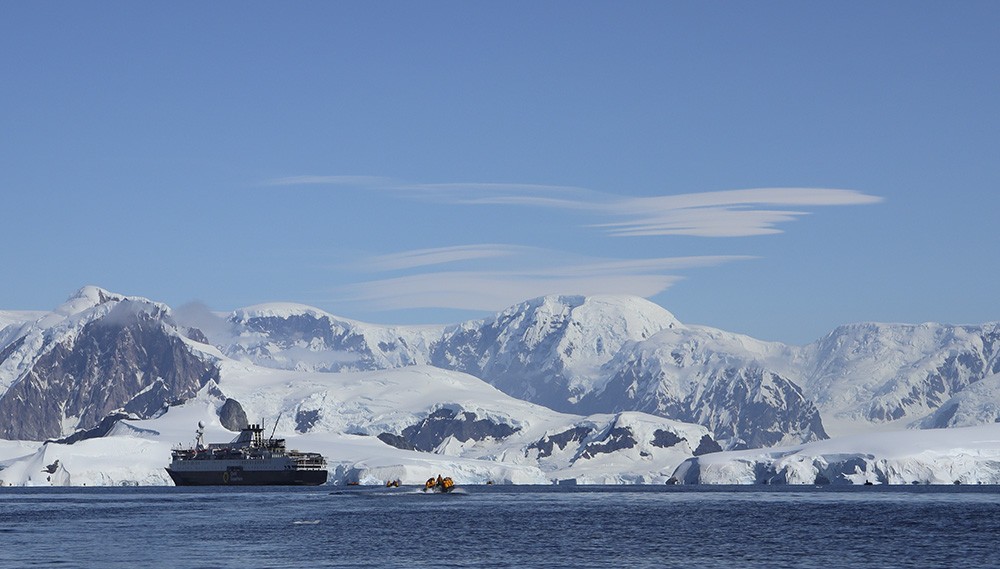
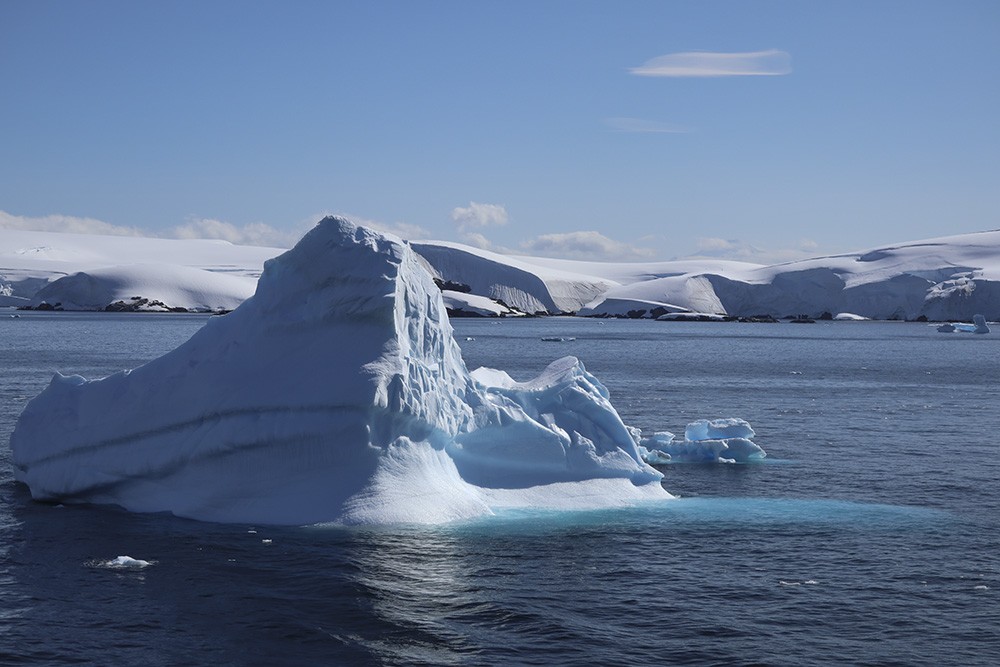
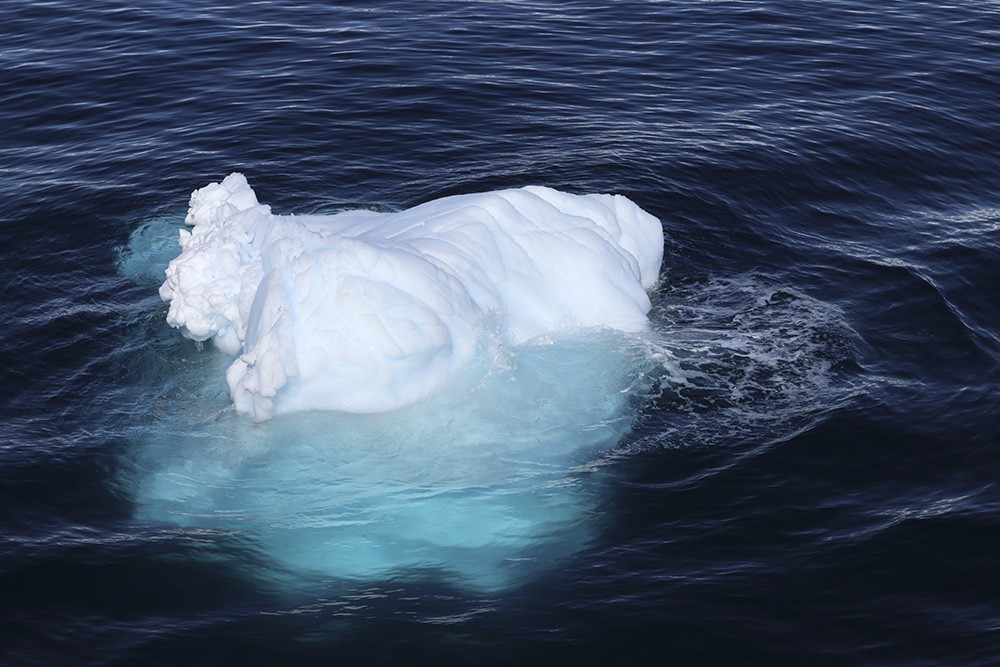
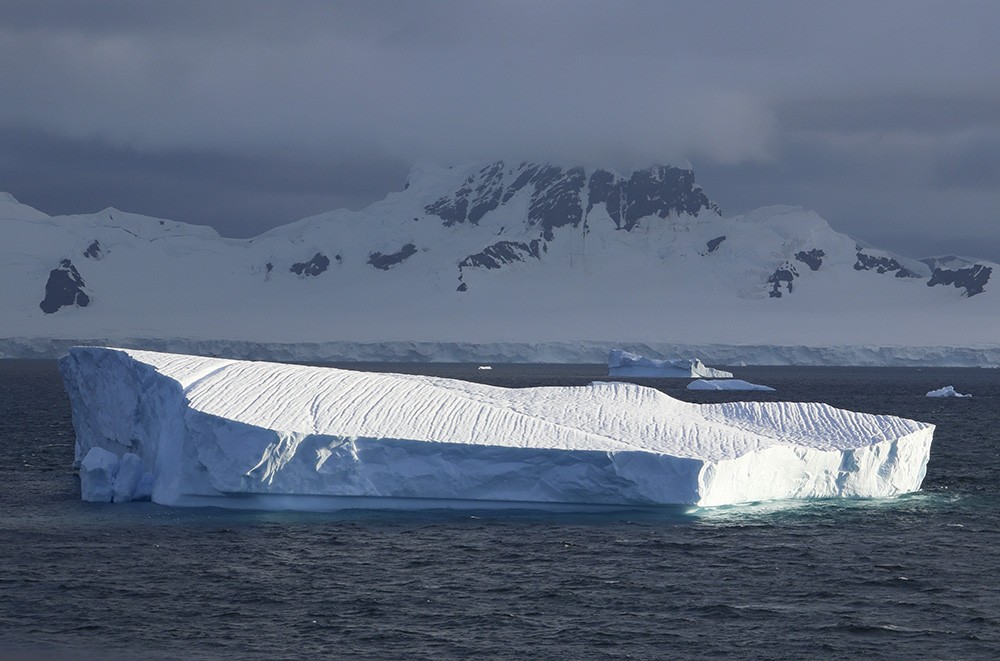
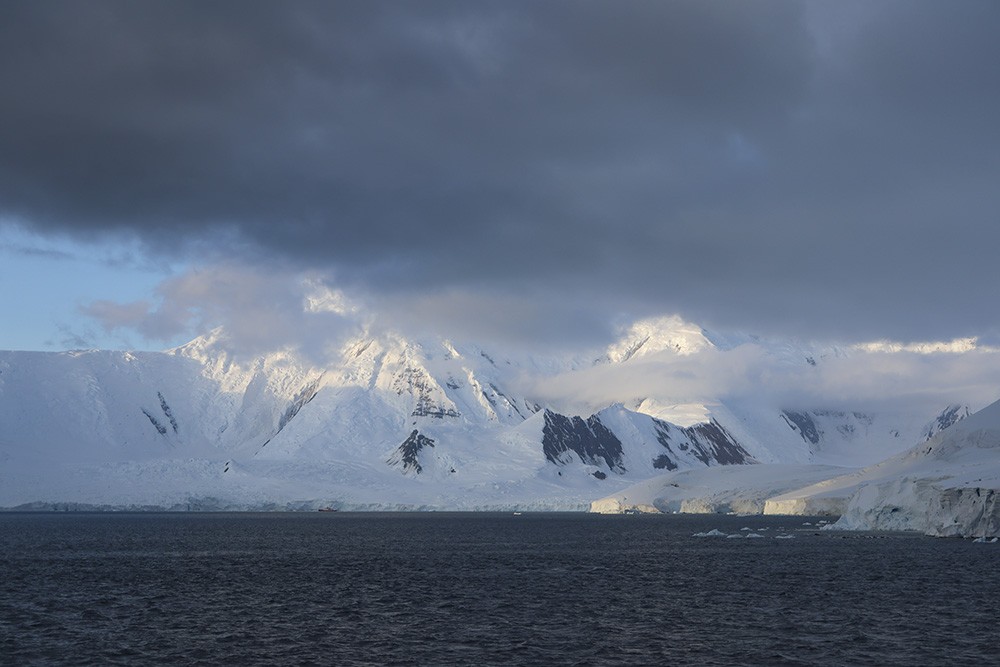
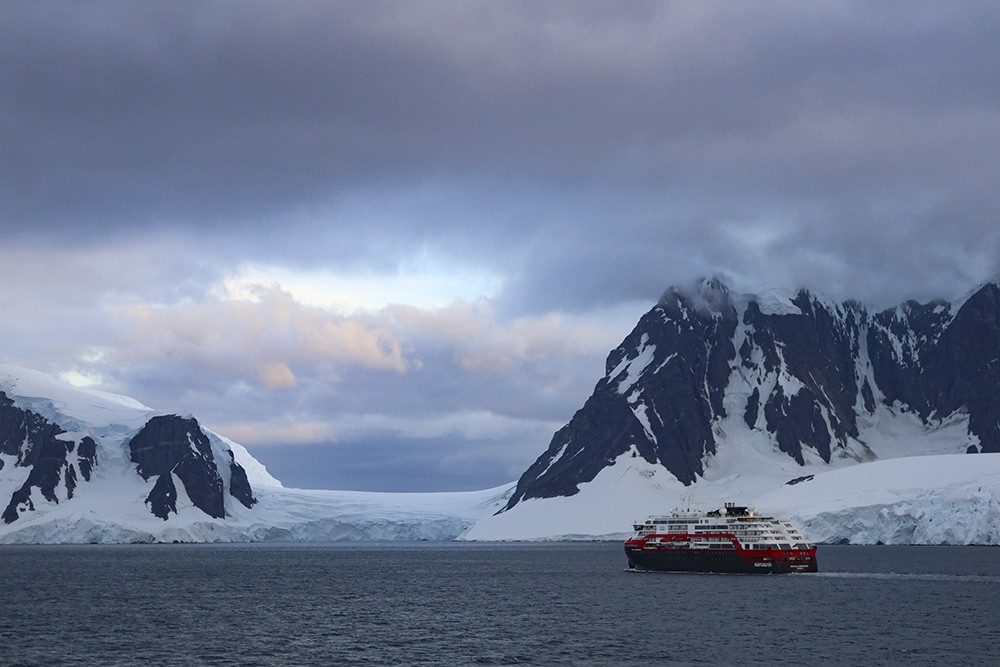
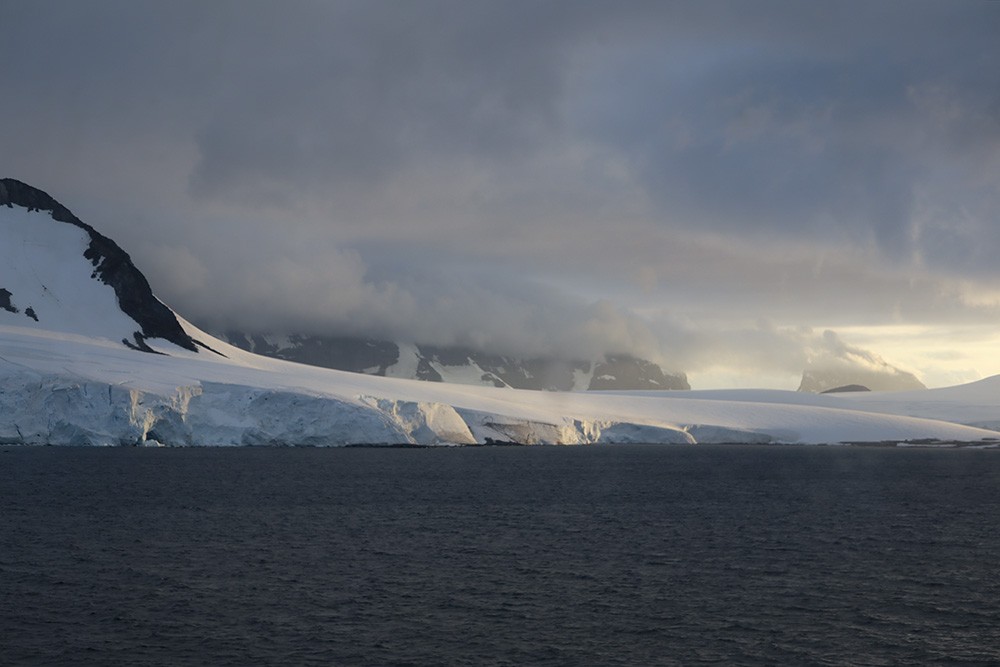

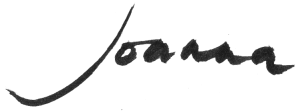
Once again, I loved your photos and was especially taken with the ancient shipwrecks and couldn’t help but wonder if anyone survived and the photo of the flukes of two whales diving at the same time….very unusual!
I was totally relating with the cold iced surroundings, since I’m sitting here in a sweatshirt, a jacket and socks for crying out loud! However the sun has arrived so will warm up soon. I’m looking forward to your next adventure!